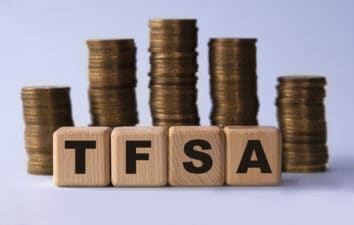The Canada Revenue Agency (CRA) is always hungry for any income you’ll rake in. Whether it be through your work, side hustle, or investments, it’s always vital to ensure that you’re allocating your wealth in the most tax-efficient manner possible. Otherwise, you may be leaving a bit of money on the table.
Hate Canada Revenue Agency taxes? Think tax-efficiency and use your TFSA!
In a prior piece, I’d outlined several CRA tax tips to help investors achieve tax-efficiency with their investments. While it can be pretty boring to talk about CRA taxes, it is worth the effort, especially considering that any savings can be compounded at a profound and difficult-to-fathom rate through accounts such as the TFSA (Tax-Free Savings Account).
In this piece, we’ll go into greater detail on the types of investments that you should seek to stash in your TFSA if you seek to shield your investment income from the Canada Revenue Agency legally. If you’re looking to give yourself a raise via your TFSA because of tough times amid this pandemic, you’re not alone. And there’s no shame in reaching for a bit of extra yield, as long as you put in the proper amount of due diligence beforehand.
Warren Buffett famously said that it’s “very stupid” to “reach for yield,” but also noted that it was “very human” and that he understood the pursuit. While arbitrary rules of thumb such as the “4% rule” may protect income investors from themselves, I think it makes sense to look to higher yielders, as long as you’re willing to put in the homework and conduct a careful analysis of the balance sheet to evaluate the true health of a dividend or distribution amid today’s crisis.
The coronavirus crisis has crippled many industries, most notably energy, office, and retail real estate. While many investors have shunned such COVID-hit industries, I think there are deep-value bargains within the most unloved sectors of the market right now. With renewed vaccine hopes and a potential end to this pandemic in the cards for 2021, I’d argue that some resilient firms within hard-hit industries are in a position to come roaring back, with their dividends (or distributions) intact.
Going against the grain with your TFSA
Not all companies are built the same. Consider shares of H&R REIT (TSX:HR.UN), which have skyrocketed 50% from its September depths. The diversified REIT is behind some intriguing properties, but the name got caught skating offside, with its high exposure to office and retail real estate — two of the ugliest real estate sub-industries amid the COVID-19 crisis.
There’s no question that the promising vaccine news sent shares of the oversold and severely undervalued REIT rocketing higher. Those who bought the name while it was mostly stagnant for the last several quarters were able to lock in a decent yield alongside some pretty outsized capital gains.
H&R REIT’s distribution didn’t survive this crisis. However, I think we’ll witness a generous hike once we’re in the post-COVID world and rent collection rates have a chance to normalize. If you’re like me and think we’ll witness some reversion in mean demand for office and retail real estate, you should look to accumulate H&R REIT shares while they’re still down and out.
The 4.9% yield may not seem like much. However, if you’re of the belief that H&R REIT is capable of climbing back from the crash, as it did during the depths of the Great Financial Crisis, the stock is still worth stashing in your TFSA. The fresh-cut distribution is yours to keep, as too will be any generous raises en route to complete normalcy. Best of all, with the name in your TFSA, you won’t have to pay a dime to the Canada Revenue Agency, as any big capital gains from the name or distributions are to be free from CRA taxes.
Foolish takeaway
It can hurt to go against the grain with a name as battered as H&R REIT. If you seek big income for less, though, now is a great time to hold your nose and buy.
Stay Foolish, my friends.








